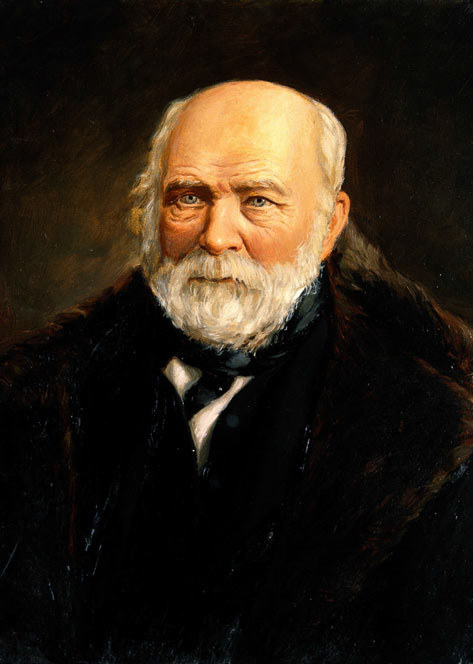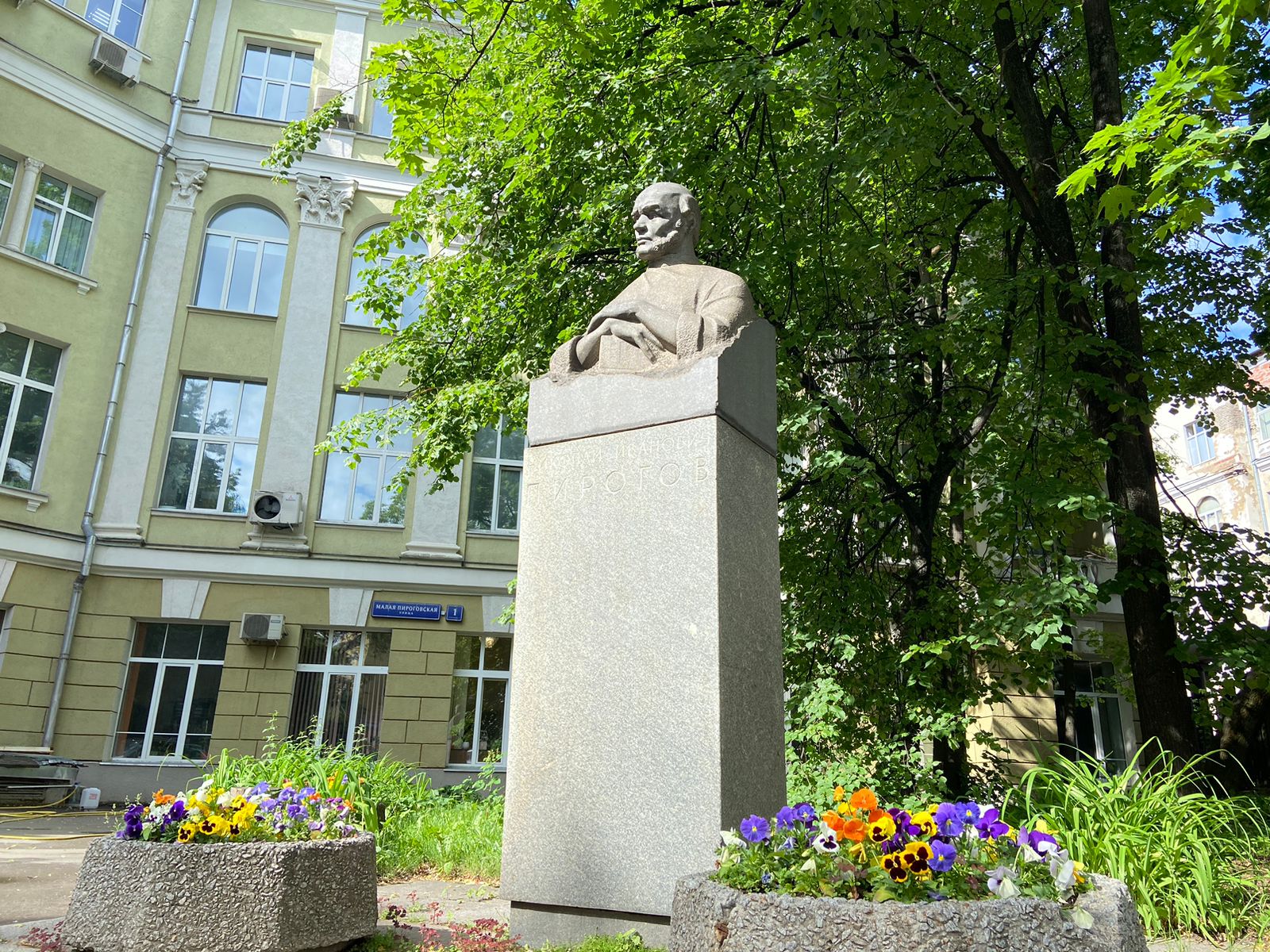Nikolai Ivanovich
Pirogov
1810-1881

Nikolai Pirogov was a Russian surgeon, anatomist, naturalist, teacher, and professor. He is best known for his work as the creator of the first atlas of topographic anatomy and as the founder of the Russian school of military field surgery and anesthesia. Pirogov was born on November 25, 1810, in Moscow, in a family of Ivan Ivanovich Pirogov, a military treasurer who served with the rank of major, and Elizaveta Ivanovna Novikova. Nikolai was their youngest child, the thirteenth. However, some archival records suggest that he may have been born in 1808, two years earlier. Despite his early education at home and a brief stint at Kryazhev private boarding school, Pirogov had to leave his studies due to financial difficulties. He then pursued his medical training in Germany and France, where he gained valuable experience in surgery and anatomy. Upon his return to Russia, Pirogov became a professor at Imperial Military Medical Academy in St. Petersburg. He made significant contributions to the field of surgery and his work on topographic anatomy was groundbreaking. His atlas, which he published in 1843, provided a detailed and accurate representation of human anatomy, allowing surgeons to better understand and treat injuries. Throughout his career, Pirogov also made important contributions to anesthesia, developing techniques for administering anesthesia and improving patient safety during surgery. He founded the Russian school of military field surgery, which focused on providing medical care in combat situations. Nikolai Ivanovich Pirogov died in 1881, but his legacy as a pioneering surgeon and anatomist lives on, inspiring generations of medical professionals. Pirogov made the decision to pursue a career in medicine thanks to Professor Efrem Osipovich Mukhin, who frequently visited their home, provided financial assistance to the family, and supported young Nikolai in every way possible. Mukhin suggested that Pirogov become a state-sponsored student, but Pirogov’s mother, despite their financial needs, rejected the offer as humiliating. In 1823, at age 14, Nikolai was admitted to the Medical Faculty of Moscow University as a student. However, in the admission form, he listed his age as 16, despite the fact that he still had family difficulties. Pirogov lacked a student uniform and had to wear a coat even in hot weather. At the university, Pirogov attended lectures by renowned professors such as Loder, Mudrov, and Mukhin. Their teachings greatly influenced his scientific outlook. After completing his studies in 1828, Pirogov earned a medical degree and was sent to Professorial Institute of Dorpat University, where he trained future teachers for Russian universities. There, he worked under the guidance of Professor Moyer and struck up a friendship with Vladimir Dahl. He also met the poet Zhukovsky. In 1833, Pirogov defended his doctoral dissertation on the ligation of the abdominal aorta in aneurysm and went to Berlin for further studies, accompanied by other Russian students. On this trip, many of them later became prominent scientists. Returning in 1836, Pirogov planned to take the chair of surgery at Moscow University, but he stayed in Riga due to illness and the position was already occupied by another person. As a result, he was offered the Department of Surgery at the University of Dorpat. In 1841, he headed the department of surgery at Medical and Surgical Academy in St. Petersburg and established a clinic at the Military Land Hospital. His research in the field of surgery led to the development of new methods that reduced the number of amputations. Pirogov’s key development was the operation that bears his name today. To improve the accuracy of surgeries, he began studying anatomy using frozen bodies, which became the basis for topographic anatomy. In 1859, he published an anatomical atlas in Latin, which was indispensable for surgeons. In 1846, he became a corresponding member of the Academy of Sciences, and in 1847, he went to the Caucasus where he used starch dressings for the first time, which were more convenient and reliable than previous methods. That same year, he performed the first surgery under ether anesthesia, marking the beginning of a new era in medicine and saving many lives.
Address: Moscow, Malaya Pirogovskaya St., 1, building 3

